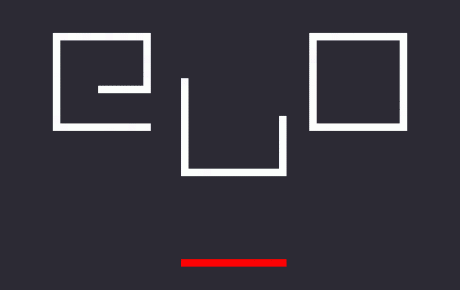Originally launched in 1997, Jody Zellen’s “Ghost City” portrays the development and growth of various cities around the world since 1997, and examines the ways in which mass media affects different cities around the world. Zellen combines the images of different cities in order to create one imaginary city. Zellen’s website is an archival work that allows the reader/viewer to observe the transformative effects of media on urban environments.
The first screen in “Ghost City” is a five-by-five grid of changing and static images. The outside squares depict people and cities, while the middle squares show the letters of “GHOST CITY” on a continuous loop. The navigator must click on one of the twenty-five frames in order to explore parts of the imaginary city. The pathways lead to different images, narratives, and interactive pages where the reader decides what to hear and see. The various pathways are interconnected, creating a network of visual associations of urban landscapes. The pathways, connections, and endpoints evoke the physical exploration of a city, in which an individual can find herself lost, retracing steps, and eavesdropping on those around her.
Extending beyond the borders of “Ghost City” itself, many of its pathways link to other works by the author, including photography and works of net art. For example, by clicking on the “H” of the middle squares, the reader/viewer is linked to Zellen’s 2004 work, “War Stories.” By incorporating elements that are external to the work, Zellen emphasizes the interconnectivity between cities and their inhabitants. Zellen also incorporates the works of others in her “Ghost City,” including an excerpt from Douglas Cooper’s, Amnesia:
A moment of recognition. A man stares at a map of a city - his city - but for the longest time can not orient himself to the lines on the page. Where do these crossed lines lie in real space? Is the color significant? And, most importantly, Where is he in this picture? The map suddenly says something. The lines cohere. They do not simply refer, they speak. You have found your place. The map reaches out to the city around you and there is a moment of clarity, correspondence, reciprocity. The world pictures itself. The map becomes a mirror. Your face reflected in the mirror finds its ground in the cradling city.
The passage evokes themes that are central to Zellen’s work: The disorientation that Cooper describes is depicted by Zellen’s blurred human figures and jumbled urban architecture. Zellen’s images express many perspectives—reversed, turned, and rendered in both positive and negative formats. The visual chaotics in “Ghost City” implies that experience in the urban environment cannot be reduced to “lines on the page” but, rather, it is an unpredictable merging of multiple selves, structures and spaces. The narrative elements of the work are similarly multiple, referencing mirrors, the body, infinity, technology, and the sense of comfort in large groups. These narrative elements are emphasized by the images, as well as by links such as “crowds + power” (reached by clicking on the “C” of the middle square), in which Zellen describes the chaotic way in which crowds form in times of danger or confusion, regardless of whether anyone has knowledge of what has occurred.
The textual elements are diverse throughout the “Ghost City,” appearing on the screen as prompts. Each pathway has an endpoint, but the pathways also loop back to the imaginary city, prompting the reader/viewer to retrace her steps and rediscover various elements. By turns, the reader/viewer finds herself having to navigate the mouse over various pictures on the screen, in order to find the correct image that provise a link forward. Links vary from basic images, to text displayed via the opening of windows that containing narrative fragments or sound clips of the urban environment. The imaginary “Ghost City” presents the urban environment as a continually evolving and unpredictable space where individuals exist in a chaotic and network of technologically enabled connections.
Kayla Bell was a student of Dr. Kiki Benzon for a course in Contemporary Fiction taught at the University of Lethbridge, Canada during the Winter term of 2011.







